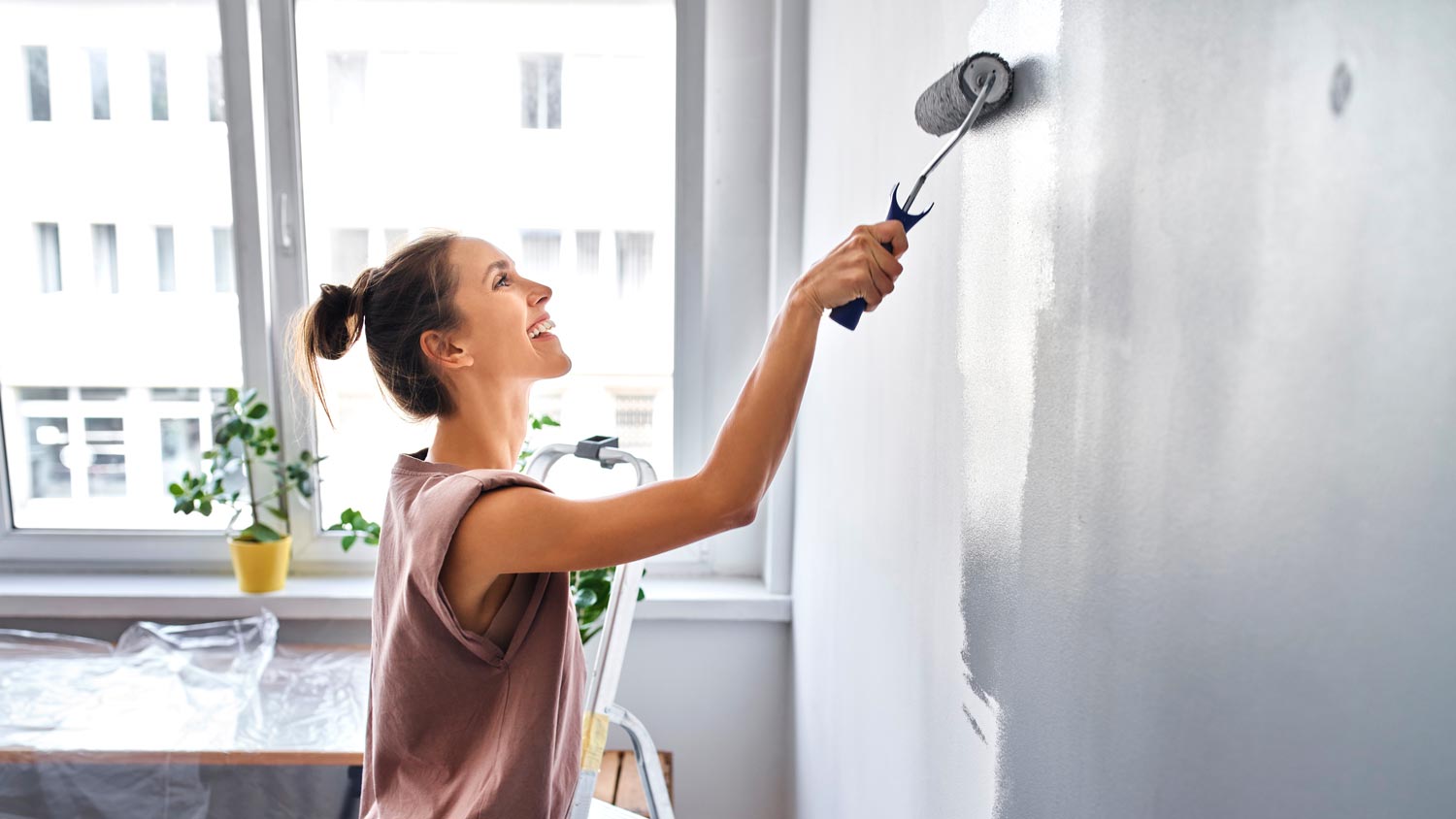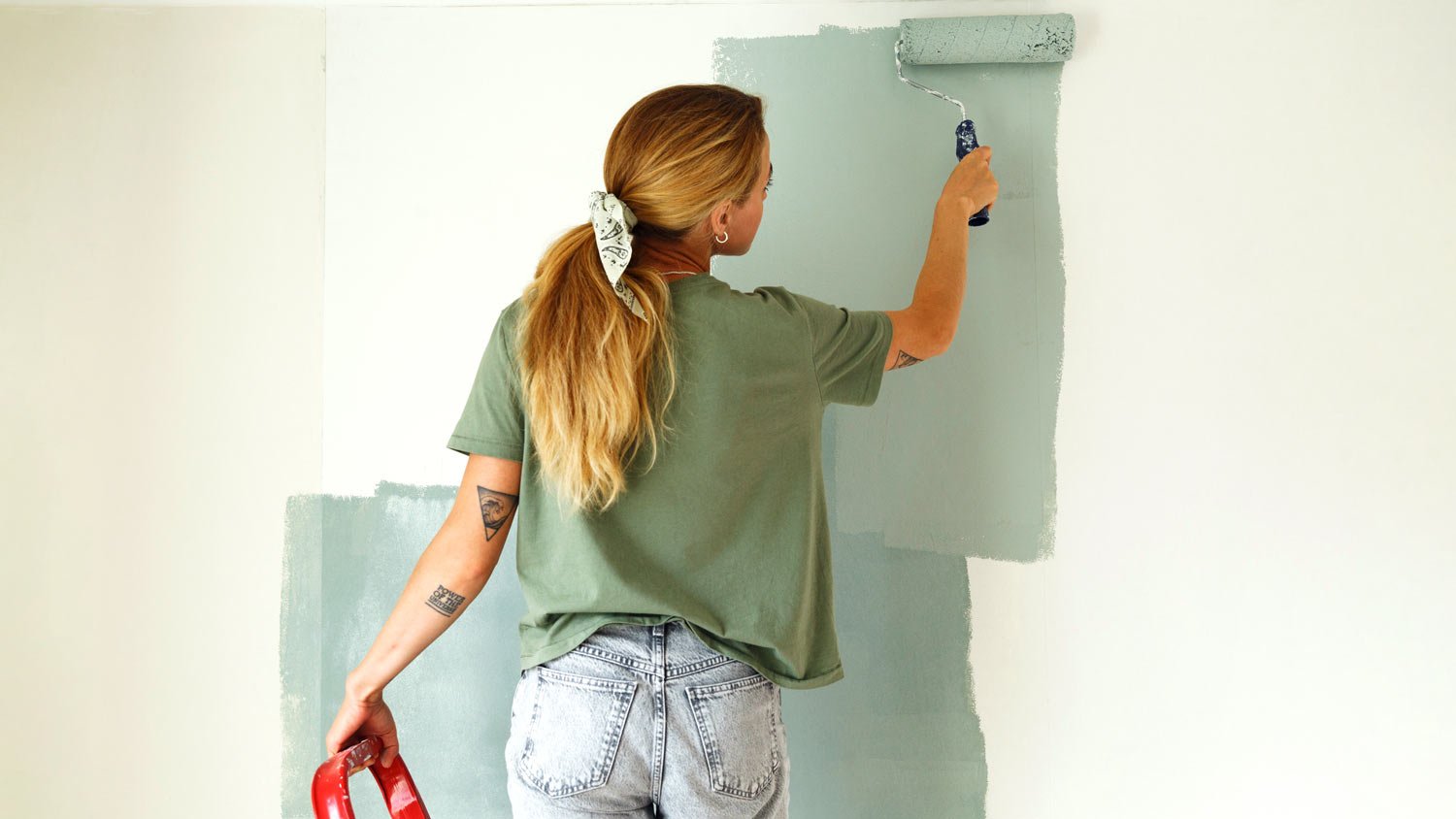
The cost to paint the interior of a house in Portland, OR depends on size, layout, type of surface, and more. Learn what factors can influence your total in this guide.
Subtle sheen differences can make all the difference


Eggshell paint provides a slightly reflective surface.
Matte paint absorbs light and has almost no reflectiveness.
Eggshell paint can give a room a feeling of depth and warmth.
Matte paint successfully hides minor imperfections in walls.
Eggshell is a bit more expensive than a matte paint finish.
When doing a new interior paint job, most people will focus on color. However, when you’re serious about achieving perfect results when painting walls, you also need to find the right sheen. Two popular sheens are eggshell and matte, but it’s important to know what distinguishes one from the other. Learn the pros, cons, and cost differences when it comes to eggshell versus matt paint finishes.
Interior painting offers a high ROI of around 107%. That means that most homeowners will recoup between $2,100 and $16,000, depending on the size of their painting project. Neutral colors are more appealing to potential buyers than darker colors.
The key difference between eggshell and matte paint sheens is the slightly more reflective surface of an eggshell finish. Eggshell paint has a sheen that reflects 10% to 25% of light, while matte’s sheen reflects 3% to 10% of light. Rather than reflecting light, matte absorbs it, allowing it to hide minor imperfections in the wall. Once the paint dries, eggshell creates a sheen that can add warmth to a room.
On a paint finishes chart, eggshell and matte sheens would be next to each other. This means the sheen they create is similar. But what is sheen, exactly? Sheen refers to the level of gloss or reflectiveness that a painted surface generates.
Lower-sheen paints, like matte and flat, create minimal or no reflectiveness.
Medium-sheen paints, like eggshell and satin, have some reflectiveness.
Higher-sheen paints, like semi-gloss and high-gloss, create significant reflectiveness.
When you compare satin versus flat paint, you’d find a similar comparison to eggshell versus matte, where you have a slightly reflective paint versus paint with almost no reflectiveness. Satin versus semi-gloss paint is not a similar comparison to eggshell versus matte because both the satin and semi-gloss finishes would have a far more reflective surface than either eggshell or matte.
If you are ever unsure which finish is the right one for the way you use the room and for the look you’re trying to achieve, contact a local interior painting professional. The pros can give you key advice based on your precise needs.

What is eggshell paint? Eggshell has a slightly below-average level of reflectivity in the paint when it dries. Its level of reflectiveness is similar to that of an actual eggshell. It’s a nice middle-of-the-road paint finish, as it has average durability, ease of application, cost, and ability to resist moisture.
When comparing gloss versus satin or eggshell, you’d use eggshell when you want a finish that feels soft with its slight reflectiveness. Gloss paint finishes stand up to moisture better than eggshell, but they also have far more reflectiveness. Eggshell finishes hide imperfections better than glossy finishes but not as well as matte paint finishes.
| Pros | Cons |
|---|---|
| Good all-around option | Costs a little more |
| Slightly reflective | Shows application flaws |
| Soft, smooth finish | Touch-ups are tough |
Best for:
Walls that need regular cleaning
Homes with an older design style
Rooms with less natural light
Eggshell paint offers a good all-around level of performance. It costs less and is easier to apply than high-gloss paints while still offering a little bit of reflectiveness. It’s also easier to wash and more resistant to scuffing than matte or flat paint finishes.
If you’d prefer a soft, almost velvety finish that adds depth and warmth to a room, eggshell is a great choice. Its slight reflectiveness can be appealing compared to low-luster finishes like matte and the highly reflective finishes like semi-gloss.

Eggshell paint will cost a little more than matte or flat finishes, averaging around $25 to $28 per gallon. However, higher- and lower-quality eggshell paints are available, meaning the price can vary.
If you have quite a few minor imperfections in your walls, eggshell won’t hide them as well as matte and flat finishes. After it dries, eggshell can show brush strokes that beginner DIY painters may leave behind. Along those same lines, if you’re painting in a room where kids and pets treat the paint roughly and create blemishes, eggshell is difficult to touch up successfully.

Matte paint has a light-absorbing finish, meaning it generates very little reflection on the walls. After it dries, it creates a little more luster than a flat paint finish, but not much more. Matte paint is great for walls that have quite a few nail holes, small cracks, and other blemishes, as it hides these imperfections well.
When comparing eggshell or matte versus satin, the satin finish provides a higher level of sheen than both eggshell and matte. However, satin is closer to eggshell than matte when considering reflectiveness.
| Pros | Cons |
|---|---|
| Hides wall imperfections | Can make rooms feel small |
| Lower cost than average | Not as durable |
| Easy to apply | Has cleaning challenges |
Best for:
Older walls with imperfections
Inexperienced DIY painters
Bedrooms
When comparing eggshell versus matte paint, matte has a slightly lower average cost at about $23 to $27 per gallon. Just like with eggshell, however, higher- and lower-quality matte paints are available.
Matte’s biggest advantage over more reflective paint finishes is its ability to hide minor imperfections in the walls. You won’t have to make as many repairs to a wall before you use matte paint. It’s also easier for beginning DIYers to apply matte paints successfully compared to using glossier paint finishes.
Dirt, sticky handprints, and other imperfections that mysteriously end up on the wall are more difficult to clean when you use paint with a matte finish. Matte paint isn’t going to give you the same level of durability as eggshell paint.
If you have a room without much natural light, the matte finish can make it feel smaller. You may even have to bring in extra artificial light to compensate.
Should you purchase and use eggshell or matte paint finishes? Although we’d love to give you a definitive answer, the truth is that it depends on where, why, and how you use the paint.
Both eggshell and matte finishes have areas where they’ll look amazing and areas where they won’t be the best choice. A matte finish can make a room look a little smaller when you don’t have much natural light, but it can deliver a feeling of coziness in the right setting. Eggshell creates a feeling of warmth and depth in the room more frequently than matte does, giving it a slight edge in this category.
On average, matte paint is slightly less expensive than eggshell by $1 to $2 per gallon when you’re comparing the same quality of paint. However, you can find average-quality eggshell paint that costs less than high-quality matte paint and vice versa.
On average, eggshell paint should give you up to 10 years of performance before you need to repaint. Matte paint has a 5- to 10-year lifespan. Eggshell is easier to clean than matte, which enhances its durability rating.
Eggshell paint resists moisture better than matte paint. This means you can wash eggshell more easily than matte. Additionally, you could use eggshell in a kitchen or mudroom setting, while you should avoid using matte in those areas.
When you have an older house with walls that have some cracks, imperfections, and nail holes, matte is a far better choice. Its low-luster finish helps it hide these imperfections more successfully than eggshell.
Removing sticky fingerprints or scuffs from a wall with an eggshell paint finish is far easier than with a matte finish. Some matte paints are not washable at all. Eggshell doesn’t let stains and grime penetrate the surface of the paint as easily as matte does.
If you are doing a DIY paint job and you don’t have much experience with painting, matte paint will be easier to use. Eggshell paint shows imperfections like bristle marks or drips far more readily than matte paint does. If these potential problems are making you leery of doing a DIY paint job, hiring a local wall painting professional ensures that any kind of paint finish you want to use will look great.
From average costs to expert advice, get all the answers you need to get your job done.

The cost to paint the interior of a house in Portland, OR depends on size, layout, type of surface, and more. Learn what factors can influence your total in this guide.

The cost to paint the interior of a house in Houston, TX depends on size, layout, type of surface, and more. Learn what factors can influence your total in this guide.

Refinishing stairs is a great way to spruce up one of a home's most dominant focal points. High-quality wood should be allowed to shine. Learn the cost to refinish stairs in this guide.

Wondering who to hire to strip paint or remove paint? Compare paint stripping contractors and lead abatement pros, and start your project with confidence.

Tired of your neutral-colored concrete countertops? Paint them for a fun DIY project that will totally transform your kitchen.

No one wants a bathroom with peeling paint and mold buildup. Picking the best paint for bathrooms helps you steer clear of these shower room setbacks.